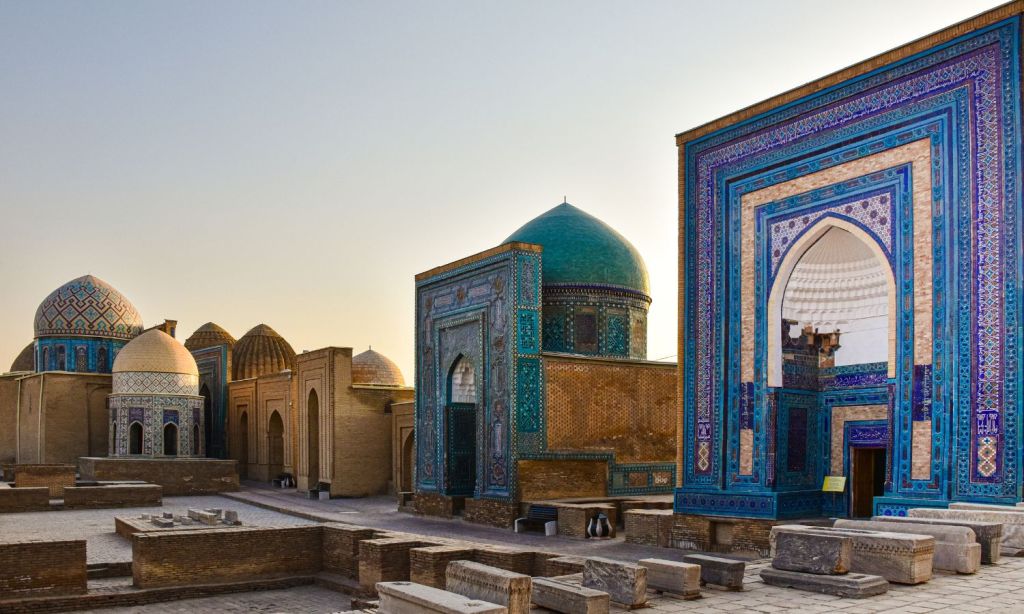In the not-so-distant past, our travel aspirations were measured in Instagram likes and perfectly staged photos, which reached its peak in 2022, but this year, we’ve hit the travel refresh button after two years of border closures, and suddenly, it’s not just about striking a pose. It’s about striking up a conversation with locals, munching on street food that doesn’t require an Instagram filter, and soaking in the energy of a place like a sponge in a tropical rainstorm.
Blame it on the tech revolution if you must. With everyone and their grandmother posting travel highlights on social media, we started feeling a bit, well, basic. It was like the world had collectively decided that a neon sign and a latte art pic were the pinnacle of travel experiences. But guess what’s not basic? Rich cultural encounters and destinations like Uzbekistan.
As the world gets smaller (thanks, Internet), we’re craving more than just a scrolling session of envy-inducing pics. We want to immerse ourselves in a place, not just snap a selfie and move on.
Sean Martin, Managing Director of Asia Pacific for G Adventures, attributes this change to the lessons learned during the pandemic, emphasising the newfound appreciation for life experiences. “COVID has taught us more than anything just how much we value experiences,” he says, highlighting a departure from the mundane to a pursuit of once-in-a-lifetime moments.
With the current state of the world, there is a growing awareness that our wanderlust comes with a side of responsibility. And while we’re not willing to give up travel, we are willing to change our way, tread lightly, connect deeply, and make an effort to leave a place better than we found it. Here’s how our travel needs have changed and what we can expect to see in 2024.
We Want Something Experiential
According to Martin, the age of showcasing luxurious accommodations as the highlight of a trip is waning. Travellers are increasingly seeking unique and Instagrammable destinations that offer a deeper connection to local cultures and nature. The shift is away from conventional tourist attractions like the Eiffel Tower, with a growing interest in off-the-beaten-path experiences, such as hiking in Uzbekistan.
“I think wellness is obviously surging, and it’s going beyond just a traditional spa,” says Martin. “People are seeking adventure, outdoor activities that really impact their well-being.”
There’s also this notion of ‘the fear of missing out’ (FOMO), but according to Martin, what we’re really afraid of missing out on isn’t the touristy stuff that everyone’s doing. It’s the hidden gems, the local hangouts, the spots that don’t make it to the glossy travel brochures. Because let’s face it, anyone can Instagram the Eiffel Tower, but how many can claim to have stumbled upon the best croissant joint in a quaint Parisian alley?
“I think people are just looking for a lot more uniqueness in what they’re doing in that space but also, you know, real connection to local cultures.”
The Paradox of Luxury Travel
Despite the economic challenges posed by the cost of living, Martin explains he’s seen a surge in spending on luxury travel experiences. He attributes this to prioritising experiences over material possessions, as people recognise that time is an invaluable resource.
G Adventures recently launched its newest style of travel, distilled into the Geluxe Collection, which focuses on trips that are physically active, with one-of-a-kind accommodation, elevated dining, and a heavy focus on community and culture. As Martin explains it, “It’s unlike any other program of trips currently on the market.”
The Geluxe Collection takes travellers away from big tourist attractions and turns them toward smaller attractions and communities, where Martin explains, “They need the tourism dollars more.”
“For us, the Geluxe Collection attracts a wealthier customer who wants to remain pretty active on their holiday, but also someone who wants to create a connection with local communities and give back when they travel.”
We Want to Take More Solo Trips
Solo travel is on the rise, with individuals across all age groups opting to explore destinations independently, explains Martin. He suggests that the shift is driven by a desire for freedom, independence, and a focus on mental health.
“Solo travel does a great job in offering the feeling of freedom and independence that people are craving due to just how hectic and how scheduled our lives are now.”
However, solo travel is no longer seen as a solitary endeavour but a means to meet like-minded individuals and forge meaningful connections. “Solo travellers just want to meet new people, whether that’s locals or other tourists,” says Martin.
As mental health gains increased awareness, solo travel has become a refuge for those seeking a respite from the demands of daily life. Martin observes, “More and more people now prioritise themselves and their mental health and actually take a bit more ownership over their own lives and experience.”
Solo travel is not merely a physical journey; it’s a therapeutic challenge that encourages individuals to step out of their comfort zones. “You know, it can be seen as a really appealing challenge that offers a great way to boost confidence.” “You’re no longer waiting for that right person to travel with — instead, you’re taking that trip you’ve been dreaming of for you”
Related: How Taylor Swift and Beyoncé Are Influencing the Way We’ll Travel in 2024
Related: Calling It Early: These Are the 7 Travel Destinations to Visit in 2024
Read more stories from The Latch and subscribe to our email newsletter.

